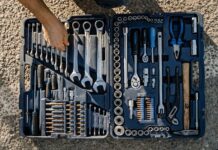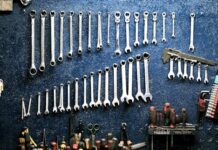When it comes to working in the trades, ensuring your safety should always be a top priority. **Safety gear for tradesmen** is not just a luxury; it’s a necessity. Protecting yourself from potential hazards on the job site can mean the difference between returning home safely and suffering an injury. In this article, we’ll dive into the essential **protective equipment for tradesmen**, review some of the best **safety tools**, and provide insights into how to select the right gear for your specific trade.
Why Investing in Safety Gear Is Important
Working in a variety of trades exposes you to unique risks, from sharp tools to heavy machinery. The importance of **safety gear reviews** cannot be overstated; investing in high-quality gear can enhance your protection against accidents and injuries. In fact, according to the Occupational Safety and Health Administration (OSHA), injuries and fatalities can often be reduced by using proper protective equipment.
Furthermore, many workplaces require safety gear to comply with industry regulations. By choosing appropriate **protective equipment for tradesmen**, you not only ensure your well-being but also that of your coworkers. This investment in safety gear contributes to a safer, more productive work environment.
Essential Types of Safety Gear
The types of **safety tools** required can vary significantly depending on the trade. Below is a list of essential safety gear applicable across multiple professions:
- Head Protection: Hard hats can protect against falling debris.
- Eye Protection: Safety glasses or goggles ensure your eyesight isn’t compromised.
- Hearing Protection: Earplugs or earmuffs can protect against damaging noise levels.
- Respiratory Protection: Masks or respirators filter harmful particles.
- Hand Protection: Durable gloves safeguard hands against cuts and abrasions.
- Foot Protection: Steel-toed boots provide crucial protection from heavy materials.
Understanding the correct gear to wear can heavily influence your safety and efficiency at work. Let’s explore some of these categories in greater detail.
Head Protection
Hard hats are critical in construction environments to prevent head injuries caused by falling objects. Look for hard hats that meet safety standards such as ANSI Z89.1. Ensure a proper fit and look for added features like adjustable suspension systems for maximum comfort. Brands like **MCR Safety** and **3M** offer a range of styles that combine safety with comfort.
Eye and Face Protection
Protective eyewear is essential in trades like construction, welding, and woodworking. **Safety glasses** should be lightweight, comfortable, and provide a secure fit. For tasks that produce flying debris, consider using goggles that offer a full seal around the eyes. For additional protection, face shields can be beneficial during heavy grinding or cutting processes. Brands such as **Jackson Safety** and **Honeywell** provide some top-rated safety eyewear options.
Hand Protection
Various tasks require specific types of gloves. For example, heavy-duty work gloves featuring cut-resistant materials are essential in construction, while rubber gloves are better suited for electrical work. Investing in quality gloves from manufacturers like **Mechanix Wear** or **Carhartt** ensures you get both durability and comfort.
Foot Protection
Choosing the right boots is crucial when working in hazardous environments. **Steel-toed boots** guard against falling objects and crushing injuries. It’s important to select waterproof options if you’re working in wet conditions. Companies like **Timberland Pro** and **Caterpillar** offer an array of safety footwear tailored for different trades.
Trends in Safety Gear
The industry is always evolving, and so too are the innovations in **safety tools**. New technologies are leading to the development of smart safety gear that can monitor environmental conditions and worker safety. For instance, smart helmets equipped with augmented reality are beginning to enter the workspace, allowing tradesmen to receive real-time information while focusing on their tasks.
Moreover, advancements in materials, such as breathable fabrics for work clothing, provide better comfort and functionality without compromising on safety. Keep an eye out for gear that incorporates these smart technologies for an added layer of protection.
Choosing the Right Safety Gear
When selecting **protective equipment for tradesmen**, consider the specific risks associated with your trade. **Safety gear reviews** can provide insights into the most reliable brands and products. Ensure that all equipment meets applicable safety standards and regulations for your industry. Investing in gear that’s well-reviewed can save you from compromising your safety.
In addition, comfort should not be an afterthought. Gear that fits well enhances your mobility, enabling you to perform your job efficiently. Always try on equipment before purchasing to ensure it’s a good fit.
FAQs about Safety Gear for Tradesmen
1. What is the most important piece of safety gear for a tradesman?
While all **safety tools** are important, hard hats and safety footwear are often considered the most crucial due to the risks associated with head injuries and foot injuries on the job site.
2. How often should safety gear be replaced?
Generally, safety gear should be inspected regularly for wear and tear. Replace gear like gloves and helmets at least once a year or sooner if damage is visible.
3. Is it worth investing in higher-end safety gear?
Yes! Higher-end safety gear typically offers better protection, comfort, and durability, which can be vital in maintaining your safety and productivity on the job.
Conclusion
Safety gear for tradesmen is essential to maintaining a secure working environment. From head to toe, every piece of protective equipment plays a vital role in preventing injuries. By considering the factors outlined in this article and staying informed through **safety gear reviews**, you can confidently select the tools that best suit your needs.
Remember, putting an emphasis on safety not only protects you but also fosters a culture of safety on the job site that can significantly affect overall productivity. Make safety gear your priority, and never compromise your well-being.










